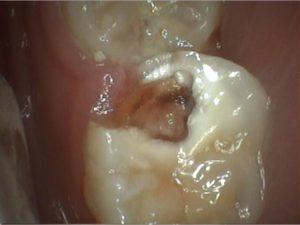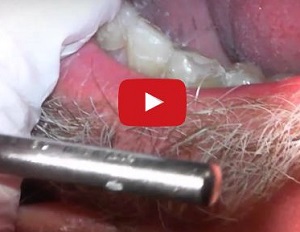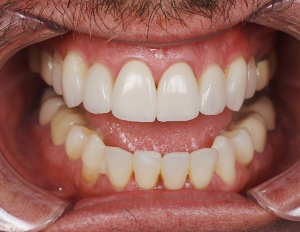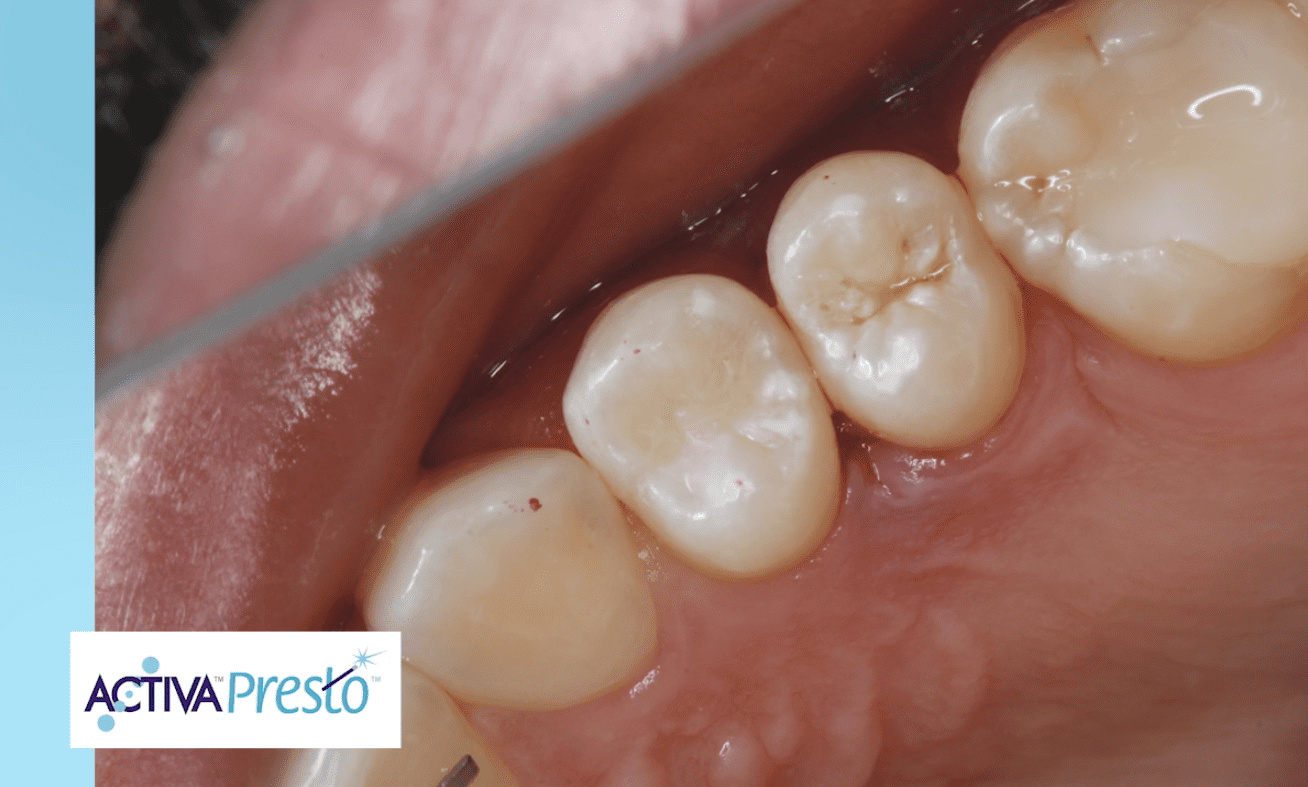By Raymond Kimsey, D.M.D.
The Heroic Dentistry series celebrates oral health care providers who, like PULPDENT founder Dr. Harold Berk, have made it their mission to save teeth and help patients live in comfort and smile with confidence.
Rachel has been diagnosed with Asperger’s Syndrome and was referred to me for comprehensive dental care. She has acute anxiety around dental treatment, which can escalate into a panic attack. We faced the challenge of allaying her fears, keeping her calm, while operating smoothly and uneventfully.
Rachel was experiencing considerable discomfort. Her lower left second molar (#18) had extensive caries and appeared hopeless, but she was still young, and I wanted to try and salvage this tooth for her (Figure 1). Endodontic treatment on her first molar (#19) had been performed successfully at another office, but she had not returned to her dentist to have the tooth restored.

I would have to complete this case in one visit. Proper isolation would be imperative. My treatment plan was to excavate the second molar (Figure 2), isolate the area, quickly build up the entire distal-lingual wall, and proceed with root canal treatment. The wall would allow me to place a rubber dam with a good seal, contain the irrigating fluids within the confines of the tooth, and then use the wall as part of the final restoration.

Controlling hemorrhaging from the gingiva is critical for these procedures. Placement of retraction cord treated (Figure 3) with ferric sulfate can stop bleeding, but the challenge is to prevent contamination and bleeding when building up the wall. For this reason, I selected ACTIVA Bioactive-Restorative. It is easy to control the flow and placement of ACTIVA through the bendable metal cannula, and this technique eliminates the use of hand instruments that could disturb the gingiva and cause bleeding.

I placed a thick layer of Teflon tape over the pulpal floor to facilitate access to the pulp chamber (Figure 4), and I built up the distal-lingual wall with ACTIVA (Figure 5). I could now place a well-sealed rubber dam and perform endodontic treatment on #18 (figure 6). After debriding the pulp (Figure 7) and obturating the canals (Figure 8), I completed the restoration with ACTIVA (Figure 9).






Using ACTIVA I could accomplish all this in one appointment with a material that provides an excellent foundation for a future crown and will be more resistant to recurrent caries at the margins.
About Dr. Raymond Kimsey
Dr. Kimsey is in private practice in Coral Gables, Florida. His specialties include implantology, anesthesia and IV sedation, and management of patients with mental and physical developmental defects.




